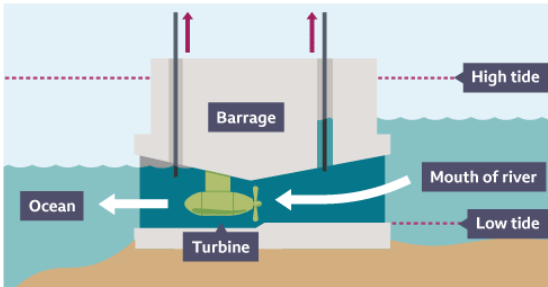IB DT: Topic 2.1: Resources and Reserves
1/24
Earn XP
Description and Tags
credits https://docs.google.com/presentation/d/1E2rY-DzYgeaXJMUWr8JnCg2rcSZhLXNajbv436j_k0I/pub?start=false&loop=false&delayms=3000&slide=id.g13f1151ba5_3_6, https://www.bbc.co.uk/bitesize/guides/zf8ck2p/revision/3
Name | Mastery | Learn | Test | Matching | Spaced |
|---|
No study sessions yet.
25 Terms
what three key issues do resource management and sustainable production carefully consider?
consumption of raw materials, consumption of energy, production of waste
what is renewable energy?
energy that comes from resources which are naturally replenished on a human timescale (e.g. sunlight, wind, rain, tides, waves and geothermal heat). renewable energy sources can require careful management to ensure they stay renewable (i.e. tree plantation).
why is there increasing pressure to use renewable energy sources?
on-going issue globally of increasing cost of oil due to political instability and issues with the security of supply. also, notable climate change and other pollution.
what are the limitations for the use of renewable energy resources as alternatives for fossil fuels?
high set-up costs
unreliable energy supply
low energy density
it is important to have a mix of energy sources so that if one fails another can still be used. also, many renewable energy technologies are still being developed.
how is wind energy harnessed?
through the use of wind turbines: tall towers with three propeller blades. these blades turn with the wind, driving a generator (device that converts kinetic energy into electrical energy) which produces the electricity. they are often grouped together off-shore in large quantities to form a wind farm.
what are the advantages of wind energy?
constantly available and sustainable
no cost for wind, and the running cost of a turbine is relatively low
what are the disadvantages of wind energy?
when there are periods of low wind, little/no energy is produced
they cost a lot to build and put in place
some people don’t like the look of wind turbines and feel that they spoil the natural landscape (nimbyism)
how is solar energy harnessed?
solar panels are made from photovoltaic (converting light energy into electrical current) cells which harness the sun’s light energy and convert it into electricity. provides clean energy from a plentiful supply, but are currently quite inefficient. the placement of solar panels is very important to ensure they track the path of the sun and harness the optimum amount of solar energy.
what are the advantages of solar energy?
clean, renewable energy source
reduces household energy bills
what are the disadvantages of solar energy?
some people don’t like the look of solar panels or feel that they spoil the appearance of a building (nimbyism)
costs a lot to install
does not produce much electricity when there is considerable cloud cover, during the winter months or at night
how is tidal energy harnessed?
relies on the gravitational pull of the moon, which causes the change in water levels known as tides. a tidal barrage (a dam that generates energy from running water) is built across the mouth of a river where it meets the ocean. the barrage is constructed so that the incoming tide passes through turbines to generate electricity. it also harnesses the reverse flow of water when the tide goes out.

what are the advantages of tidal energy?
clean and renewable
tidal power plants last for a long time
doesn’t create an eyesore as it is out of sight
what are the disadvantages of tidal energy?
construction of tidal barrages is expensive
environmental impact of tidal barrages is unknown (potential destruction of sea bed, biodiversity)
how is hydroelectricity harnessed?
uses a dam to block a valley or major river, often creating a reservoir behind the dam. once the water has built up behind the dam, it is directed and released by valves through turbines. these turbines turn generators to produce electricity.
what are the advantages of hydroelectricity?
clean, renewable
valves can be opened or closed very quickly to produce energy at peak/quiet times
no pollution whilst running it
what are the disadvantages of hydroelectricity?
construction of dams is expensive
objections from people in the surrounding environment
affects wildlife by flooding the valley
how is biomass energy harnessed?
involves growing plants or using animal materials, not for consumption but so that they can be burned to produce heat.
what are the advantages of biomass energy?
clean and renewable
carbon dioxide is released in the process and can then be reused by plants in photosynthesis
replacement plants can be grown very quickly to ensure a good supply
what are the disadvantages of biomass energy?
creates atmospheric pollution when burned
land used for energy crops may be needed for other purposes
what is a non-renewable resource?
finite resource: one that does not replenish itself at a sufficient rate for suitable economic extraction (e.g. coal, petroleum and natural gas). they deplete over time.
why has modern industrial society become dependent on non-renewable fossil fuels?
they are cheap
they provide plentiful energy supply
what is an identified energy resource? what is a reserve?
those whose location, grade, quality and quantity are known or estimated from specific geologic evidence. reserves are the part of the resource base that can be economically extracted at the time of determination.
how can renewability be affected for resources that are dependent on regrowth?
they can be depleted beyond the point of renewability (e.g. deforestation leading to desertification). pollution can also make a renewable resource (such as water) unusable in a particular location.
define resources
the stock or supply of materials available in a given context
what impact does development have on the environment?
the impact of multinational companies when obtaining resources in different companies/regions can be a significant issue for the local population and can have major social, ethical and environmental implications.